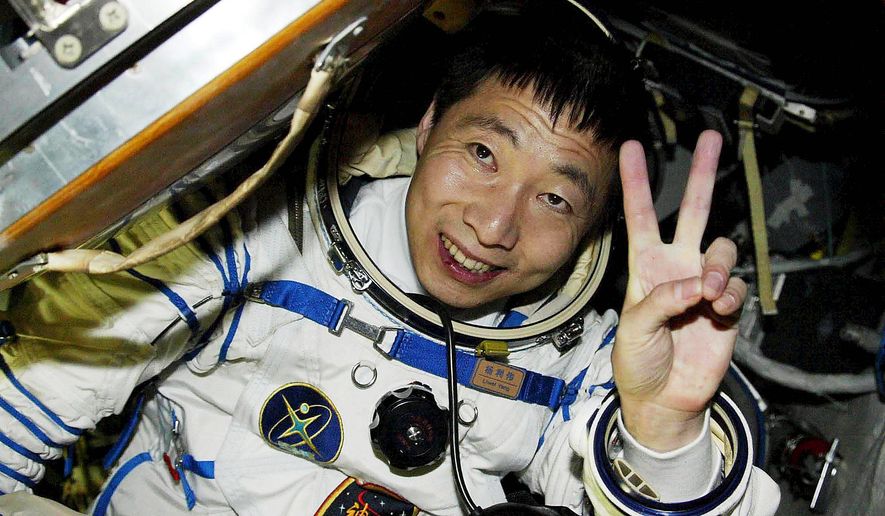China and Russia have announced plans for a joint space exploration project that ultimately could lead to the establishment of a Sino-Russian base on the moon.
The announcement was made April 28 in the Chinese city of Hangzhou, when visiting Russian Deputy Prime Minister Dmitry Rogozin met with his Chinese counterpart, Vice Premier Wang Yang. The two are the point men for the Chinese-Russian prime ministers regular meetings forum.
Russia initiated its lunar project without the participation of China, which has an ambitious space program of its own. President Vladimir Putin’s Ukraine gambit has deepened Russia’s isolation as a result of waves of the U.S.-led economic, financial, industrial and personnel sanctions, which has pushed Moscow ever closer to form a more significant alliance with Beijing. As one of the most anti-Western Russian leaders, Mr. Rogozin is prominent on the sanctions list of the U.S. and European Union.
In the immediate aftermath of Russia’s annexation of Crimea and the subsequent impositions of Western sanctions, Mr. Rogozin and Mr. Wang met in Vladivostok, Russia, in April 2014. At the time, both countries found common ground in being chastised by the West for territorial aggrandizements in their respective backyards and agreed to “actively promote the in-depth development of bilateral practical cooperation, reinforce cooperation in major projects,” without specifying what these projects would be.
One year later, the Rogozin-Wang meeting offered details on those ambitious joint projects, including the proposed lunar base.
Three other main projects of geopolitical significance also were announced at the Rogozin-Wang meeting in Hangzhou: a joint upgrading project for Mi-26 heavy transport helicopters, which will greatly strengthen China’s military airlift capability; joint development of wide-body aircraft to rival the jumbo jets of Boeing and Airbus; and the sale of Russia’s S-400 air defense system to China. The S-400 missile system was not meant for foreign sales, but Moscow is making a special case for China, which covets it intensely.
’CONSENSUS’ WITHOUT AGREEMENT
A new round of acrimonious political infighting has erupted in Taiwan over an old political mystery called the 1992 Consensus. The incumbent ruling KMT president is insisting on proof of such an entity while the opposition — including a former president — vehemently denies such an accord exists.
The phrase refers to a reported private agreement between semi-official representatives of China and Taiwan struck in Hong Kong in 1992. The purported consensus basically holds that there is only one China and Taiwan is part of that China, but Beijing and Taipei are free to interpret what that “China” is, an idea neatly formulated as “one China with separate expressions.”
Last week, KMT Chairman Eric Chu was in China conferring with Chinese leaders. No details of the talks were released, but the main theme from the incumbent KMT party in Taiwan and Chinese President Xi Jinping was the mutual acknowledgment of the 1992 Consensus.
Taiwan’s opposition, led by Democratic Progressive Party presidential candidate Tsai Ying-wen, and the former KMT President Lee Teng-hui, attacked the 1992 Consensus as a Chinese Communist Party-KMT plot to subvert Taiwan’s future and democracy.
Last week, Mr. Lee, who was Taiwan’s first democratically elected president, went on the attack and called incumbent President Ma Ying-jeou’s insistence on the 1992 Consensus “ridiculous and laughable.”
Mr. Lee said the fact that Mr. Ma has been holding such a view over the past decade was a “shame” because the 1992 Consensus is nothing but “nonsense.”
Oddly enough, China seemed to agree with Mr. Lee at times in the past two decades, albeit for entirely different reasons, and denied as well there ever was the “separate expression” part of the consensus, implying there was no such “consensus” reached in 1992.
Mr. Lee believed that the pro-Chinese elements inside the KMT party made up the concept to promote the ultimate “reunification” with the mainland. The DPP, an independence-leaning political party, wholeheartedly agreed with Mr. Lee in denying that such a consensus ever existed.
In recent years, however, the ruling KMT has lost ground among Taiwanese voters, and it looks increasingly possible that the KMT will not be able to retain Taiwan’s presidency in the election next year. As a result, the Chinese government has adjusted itself and stepped up its insistence that the 1992 Consensus is indeed real, especially the “one-China principle,” and that anybody in Taiwan who wants to initiate a political dialogue with China must recognize the key part of the 1992 Consensus, i.e., that there is only one China and Taiwan is part of China.
• Miles Yu’s column appears Fridays. He can be reached at mmilesyu@gmail.com and @Yu_miles.
• Miles Yu can be reached at yu123@washingtontimes.com.




Please read our comment policy before commenting.